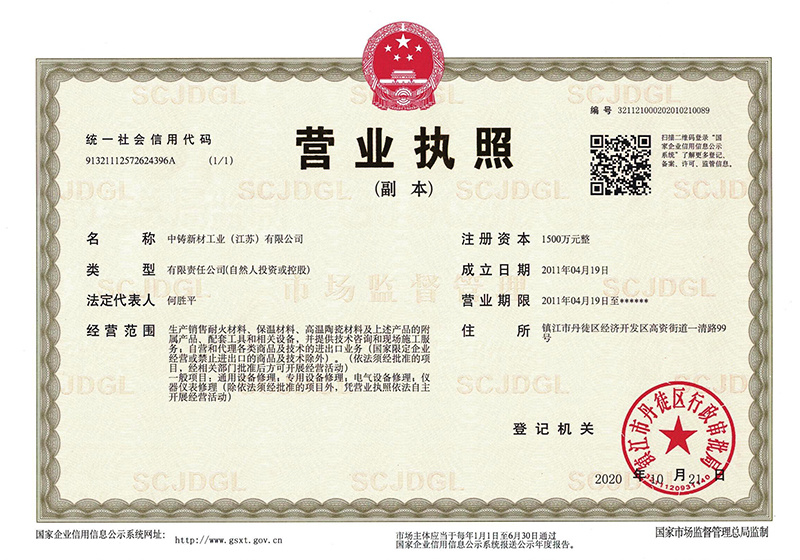News
SINO-FOUNDRY—professional refractory manufacturer
The Role of Castable Refractories in High-Temperature Applications: Essential Insights and Innovations
2024-12-14
The Role of Castable Refractories in High-Temperature Applications Table of Contents Introduction to Castable Refractories Key Properties of Castable Refractories Manufacturing Process of Castable Refractories Applications of Castable Refractories in Various Industries Advantages of Using Castable Refractories Challenges in the Use of Castable Refractories Future Trend
The Role of Castable Refractories in High-Temperature Applications
Table of Contents
- Introduction to Castable Refractories
- Key Properties of Castable Refractories
- Manufacturing Process of Castable Refractories
- Applications of Castable Refractories in Various Industries
- Advantages of Using Castable Refractories
- Challenges in the Use of Castable Refractories
- Future Trends in Castable Refractory Technology
- Conclusion
- FAQs About Castable Refractories
Introduction to Castable Refractories
Castable refractories are a critical component in high-temperature applications, providing the necessary durability and heat resistance in environments that demand superior performance. These materials, which are a type of refractory concrete, are designed to withstand extreme temperatures and are essential for industries such as steel production, petrochemical processing, and power generation. Understanding their composition, properties, and applications will help professionals make informed decisions about their use in various industrial processes.
Key Properties of Castable Refractories
Castable refractories are characterized by several key properties that make them suitable for high-temperature applications:
Thermal Resistance
One of the most important features of castable refractories is their ability to withstand high temperatures without losing structural integrity. These materials can often tolerate temperatures exceeding 1,600°C (2,912°F), making them ideal for furnace linings and kilns.
Chemical Resistance
Castable refractories are designed to resist corrosive environments, which is particularly important in industries where exposure to molten metals, slag, and other aggressive substances is common. Their chemical stability ensures longevity and reliability in demanding applications.
Workability and Installation
These refractories are typically supplied in a dry or pre-mixed form, allowing for easy transportation and installation. Their workability enables complex shapes and designs to be formed, making them suitable for a wide range of geometries.
Mechanical Strength
High compressive strength is another essential property of castable refractories. This strength allows them to support heavy loads and resist deformation under pressure, which is vital in many industrial applications.
Manufacturing Process of Castable Refractories
The manufacturing process of castable refractories involves several steps to ensure quality and performance.
Raw Material Selection
The selection of raw materials is critical in defining the final properties of the castable refractory. Commonly used materials include alumina, silica, and various additives that enhance specific performance characteristics.
Mixing and Formulation
Once the raw materials are selected, they are mixed in precise proportions to achieve the desired consistency and performance. This stage may also include the addition of water or other binding agents to facilitate the casting process.
Curing and Drying
After mixing, the castable refractory is poured into molds and allowed to cure. This process can take several hours to days, depending on the specific formulation and environmental conditions. Proper curing is essential for achieving the desired mechanical properties.
Applications of Castable Refractories in Various Industries
Castable refractories find applications across multiple industries, owing to their versatility and resilience.
Steel Manufacturing
In the steel industry, castable refractories are used in blast furnaces, ladles, and tundishes, where they provide thermal insulation and protection against corrosion from molten metal and slag.
Cement Production
The cement industry heavily relies on castable refractories for kilns and preheaters due to their ability to withstand high temperatures and harsh chemical environments.
Petrochemical Processing
Castable refractories are crucial in petrochemical applications, where they line reactors and reformers, ensuring that the equipment can endure extreme temperatures and corrosive chemicals.
Glass Manufacturing
In glass manufacturing, castable refractories are employed in furnaces and melting tanks, where they maintain temperature stability and resist chemical attack from molten glass.
Advantages of Using Castable Refractories
The use of castable refractories offers several advantages that make them a preferred choice in high-temperature applications.
Customizability
Castable refractories can be tailored to meet specific operational requirements. This customizability allows engineers to optimize performance based on the unique conditions of each application.
Reduced Installation Time
Unlike traditional refractory bricks, castable refractories can be poured into place, significantly reducing installation time and labor costs. This feature is particularly beneficial in large-scale projects where downtime needs to be minimized.
Long-Term Performance
Due to their robust properties, castable refractories often demonstrate superior durability and longevity, resulting in lower maintenance costs and reduced frequency of repairs or replacements.
Challenges in the Use of Castable Refractories
Despite their advantages, there are challenges associated with the use of castable refractories.
Thermal Shock Resistance
While castable refractories are designed to withstand high temperatures, they may be susceptible to thermal shock if subjected to rapid temperature changes. This vulnerability necessitates careful temperature management in operational settings.
Quality Control in Manufacturing
The performance of castable refractories is highly dependent on the quality of the raw materials and the manufacturing process. Inconsistencies can lead to failures, emphasizing the need for rigorous quality control protocols.
Future Trends in Castable Refractory Technology
As industries continue to evolve, so do the materials used. Future trends in castable refractories will likely focus on the following areas:
Enhanced Thermal and Chemical Resistance
Ongoing research aims to develop castable refractories with improved thermal and chemical resistance, allowing them to perform in even more demanding environments.
Environmentally Friendly Formulations
With growing environmental concerns, manufacturers are exploring the use of sustainable materials and eco-friendly production processes in the creation of castable refractories.
Smart Refractory Systems
The integration of sensors and monitoring systems in castable refractories is on the rise. These smart systems can provide real-time data on performance and conditions, enabling proactive maintenance and improved operational efficiency.
Conclusion
Castable refractories play a vital role in high-temperature applications across various industries. Their unique properties, combined with their versatility and ability to withstand harsh conditions, make them indispensable in modern manufacturing processes. As technology advances, the development of castable refractories will continue to evolve, offering enhanced performance and new opportunities for innovation. By understanding their applications, benefits, and challenges, professionals can make informed decisions that optimize their use in demanding environments.
FAQs About Castable Refractories
1. What are castable refractories made of?
Castable refractories are typically composed of alumina, silica, and various additives that enhance their performance. These materials are mixed with water or binding agents to create a pourable material.
2. How do castable refractories compare to traditional refractory bricks?
Castable refractories offer greater flexibility in shaping and installation, as they can be poured into various molds, while refractory bricks require more labor-intensive installation.
3. Can castable refractories be used in outdoor applications?
Yes, as long as they are appropriately formulated for the specific environmental conditions, castable refractories can be used in outdoor applications.
4. What industries benefit the most from castable refractories?
Industries such as steel manufacturing, cement production, petrochemical processing, and glass manufacturing extensively use castable refractories due to their high-temperature capabilities.
5. How can I ensure the longevity of castable refractories in my application?
To ensure longevity, it's essential to select the right type of castable refractory for your application, implement proper installation techniques, and conduct regular maintenance to monitor for signs of wear or damage.
Related News
2024-11-05
Zhongzhu New Materials Industry sincerely invites you to participate in the 24th International Forum and Exhibition on Recycled Metals.

WeChat public account

View mobile website
Address : No. 99, Yiqing Road, Gaozi Street, EconomicDevelopment Zone, Dantu District, Zhenjiang City
Fax : +86-511-85683066
E-mail : sales@sfr168.com
Website : https://www.sfr168.com
Copyright©2023 Sino-Foundry Refractory(Jiangsu) Co.,Ltd. Powered by:www.300.cn
Copyright©2023 Sino-Foundry Refractory(Jiangsu) Co.,Ltd.
IPV6 | SEO | Cloud Information



